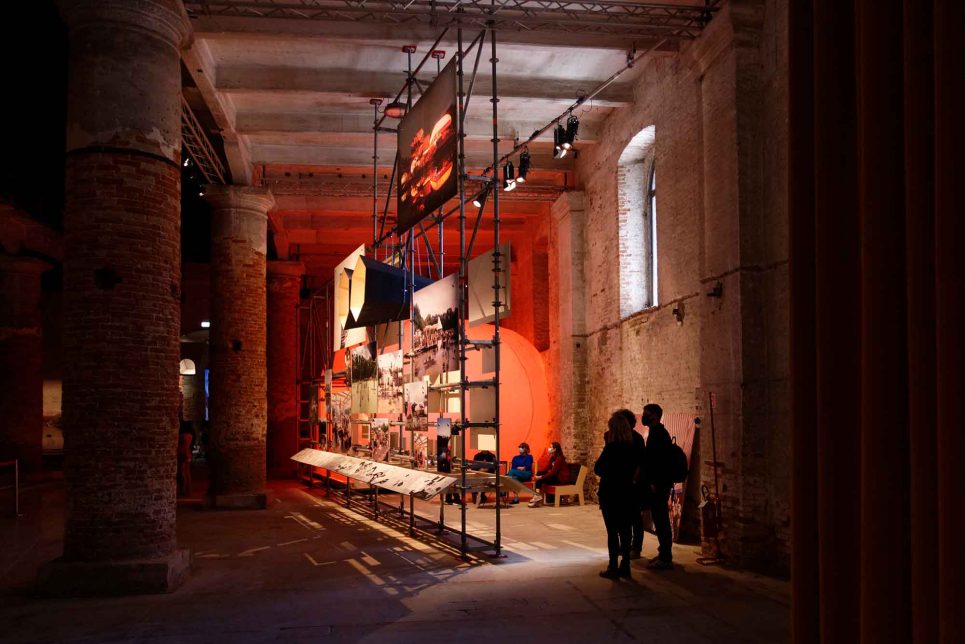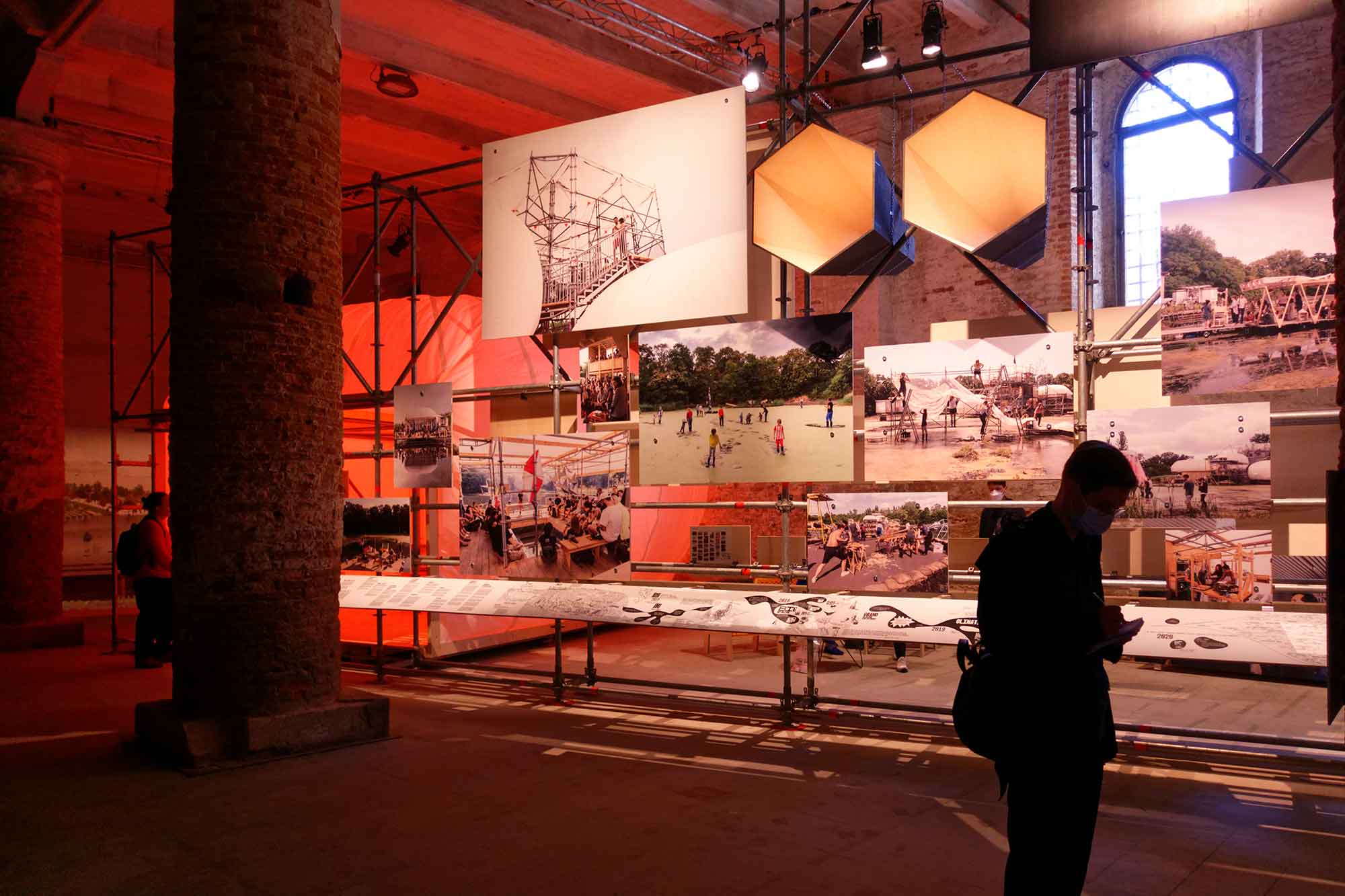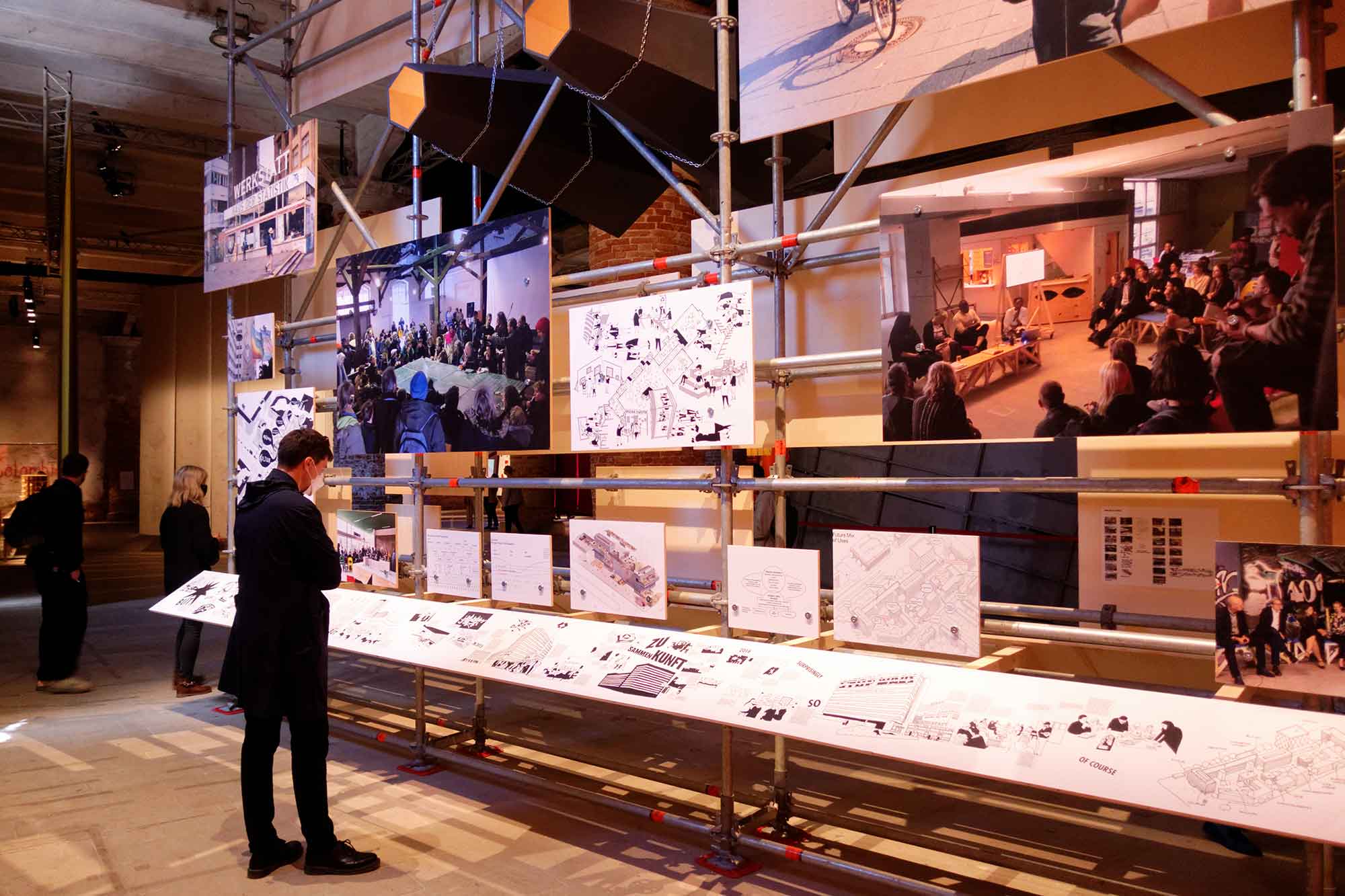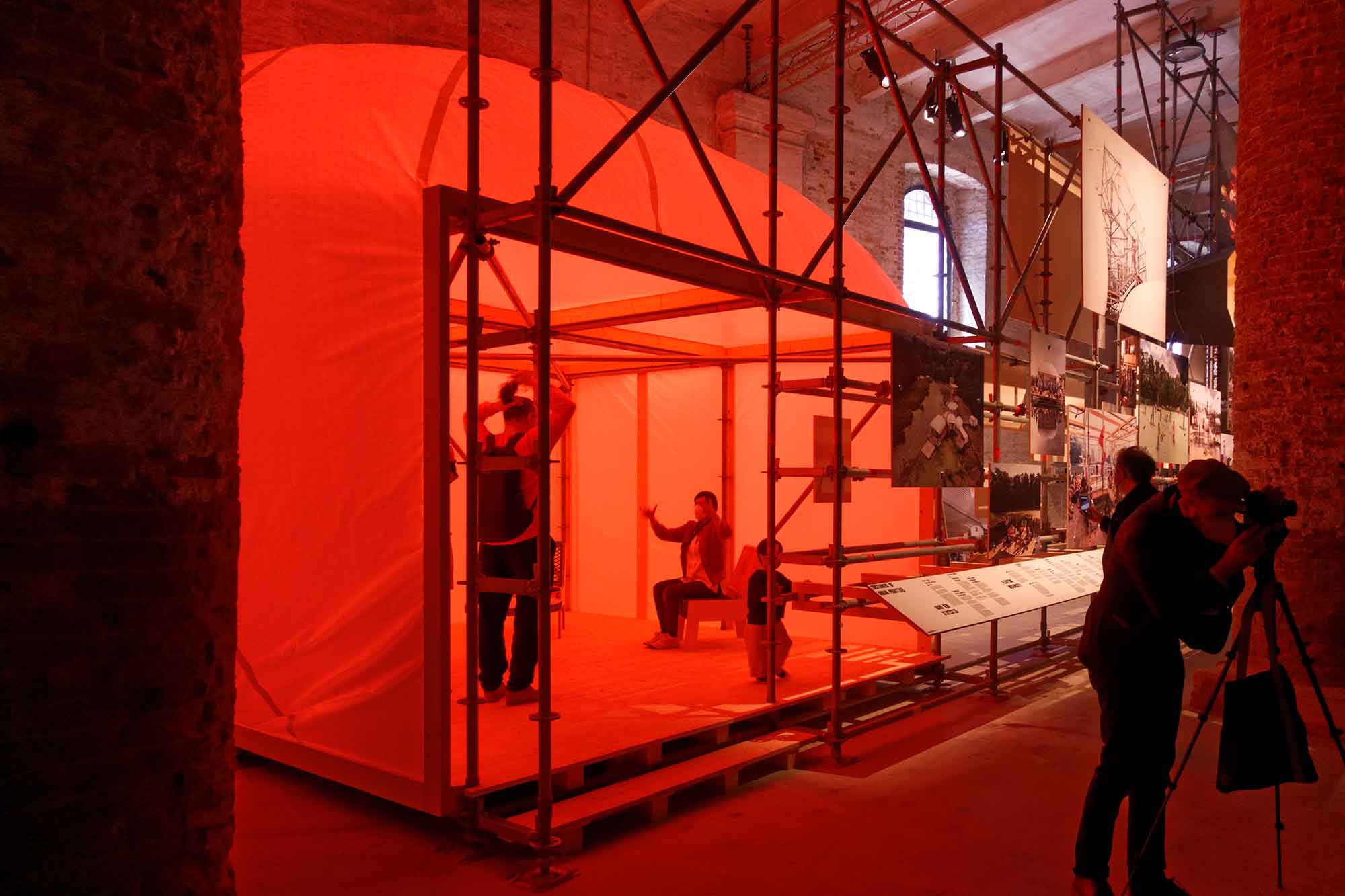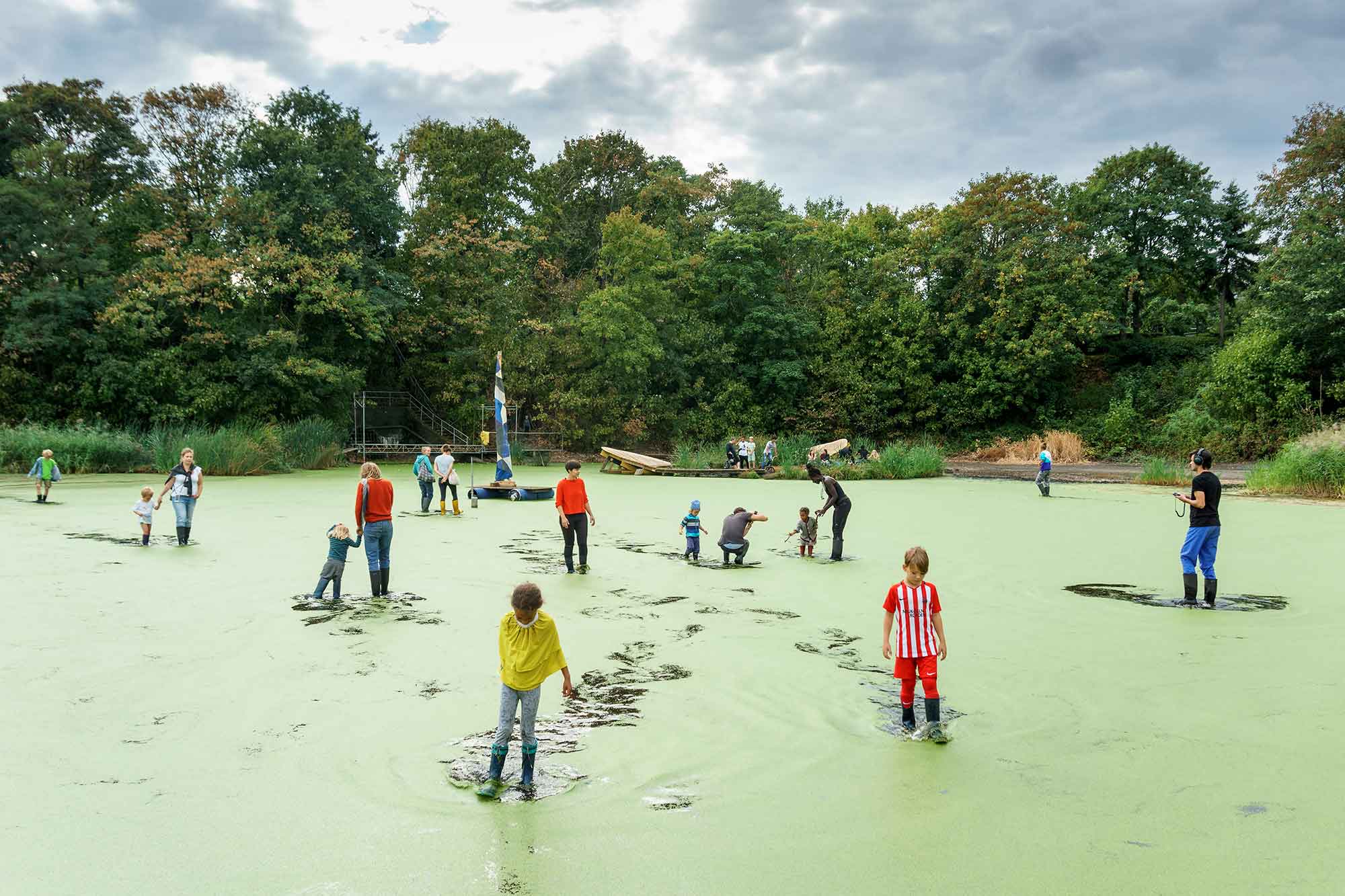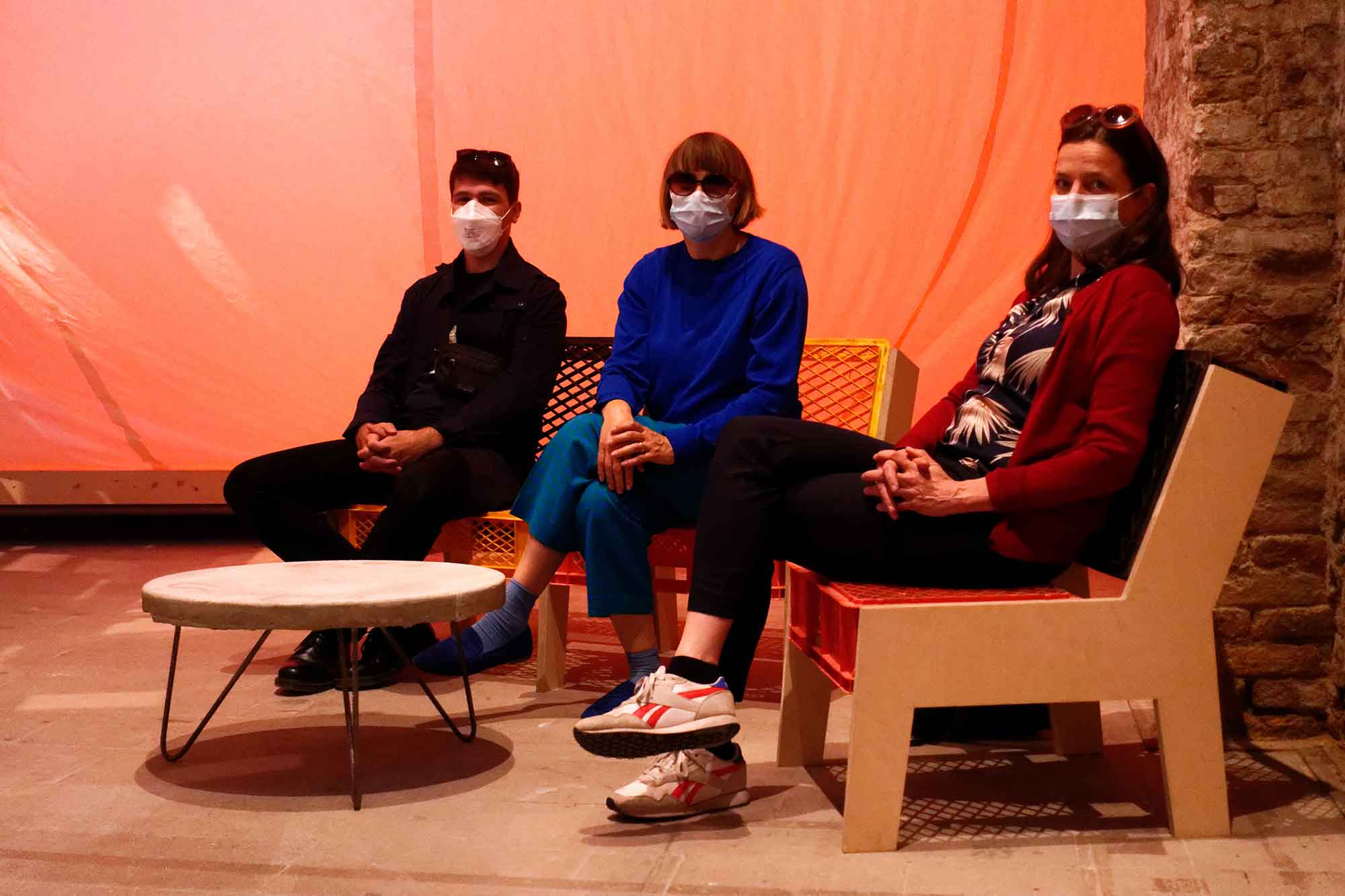Instances of Urban Practice
Bubble Team:
Ágnes László, Alice Baseian, Theo Göken
Construction Team:
Franz Siebler, Louise Nguyen, Olof Duus, Victor Navarro
23.05. – 21.11.2021
Instances of Urban Practice was made in collaboration with Kulturprojekte Berlin
and supported by ifa – Institut für Auslandsbeziehungen
We are happy and honored and thankful to announce – raumlabor has been awarded the golden lion in the 17th architecture exhibition „how will we live together?“ in the venice biennale.
The jury composed of Kazuyo Sejima (president, Japan), Sandra Barclay (Peru), Lamia Joreige (Lebanon), Lesley Lokko (Ghana-Scotland), Luca Molinari (Italy), elaborated: […] for an inspiring collaborative approach that argues for participation, regeneration and collective responsibility, resulting in two projects that are a model for imaginative civic revitalization.
This award is for all the people that collaborated with us over the years, it’s for a way of doing architecture. we like to send our biggest thanks to everybody that contributed and contributes to this fluid being we call raumlabor. together, we can change things.
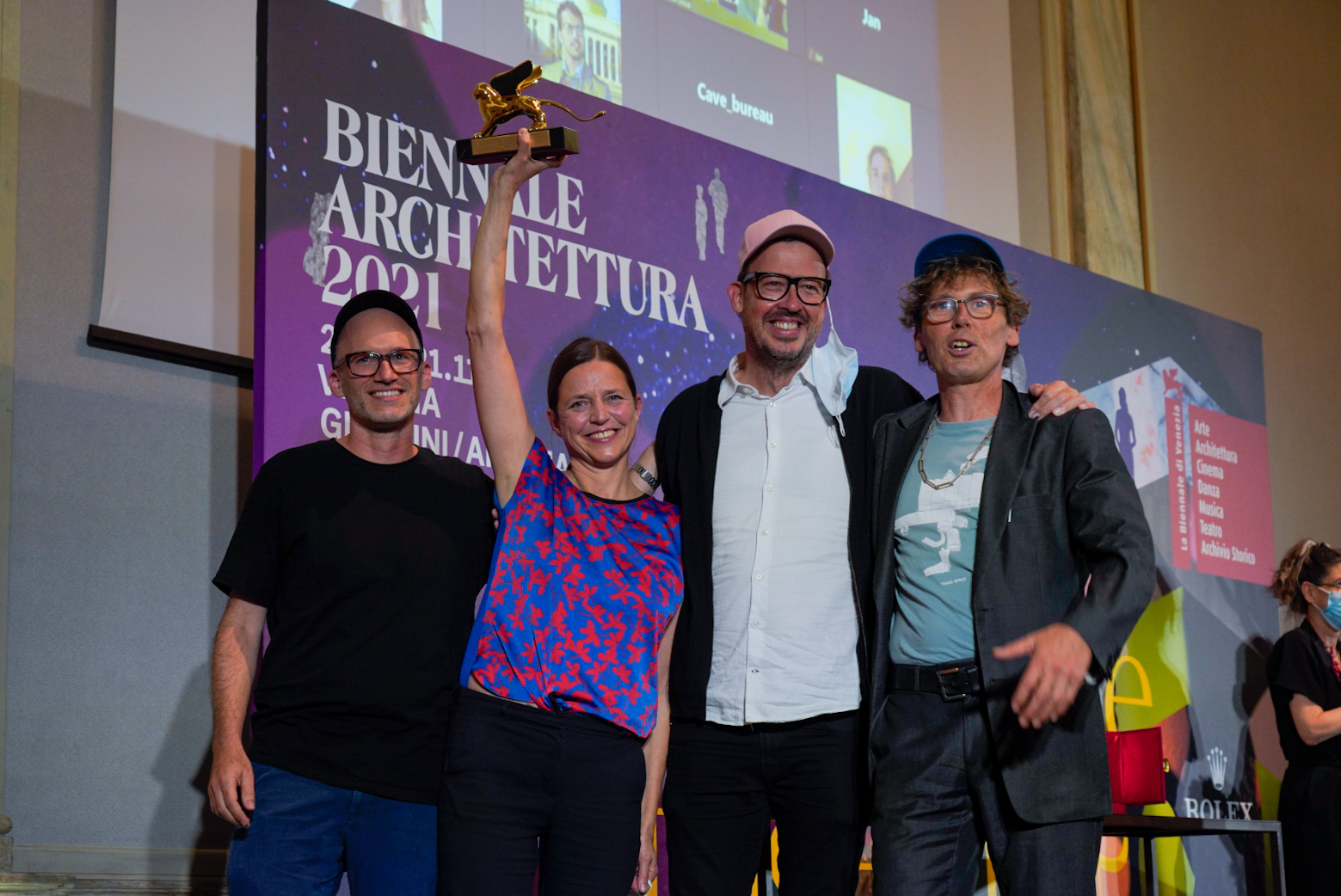 ©Andrea Avezzu, courtesy of La Biennale di Venzia
©Andrea Avezzu, courtesy of La Biennale di Venzia
Instances of urban practice is about shifting the perspective in architecture: from the built object to architectural practice, from thing or final outcome to a qualified process – architecture as a series of actions that takes a societal position.
With instances of urban practice raumlabor presents two environments that are currently in the process of being negotiated on site, where raumlabor is involved within a diverse network of collaborators as initiator, negotiator, space-creator, mediator and caretaker. The Floating University and Haus der Statistik.
Both are located in Berlin, adjacent to outstanding places: Floating University neighboring the former Tempelhof airport, and Haus der Statistik just off Alexanderplatz. They have very different characteristics and physical appearances but are both built on the same philosophy. Both share their origin in an artistic claim and initiative, growing into complex forms of self-organization and public-civic or scientific-artistic-civic cooperation. We love to see them as learning spaces. Learning in the sense of how to re-learn another way of city-making, that is aware of the pressing questions of our tomorrows: our relationship as humans to the planetary dimension and the question of the right to the city. This includes taking care of dynamic processes of acquiring knowledges, adopting, and reacting towards the evolution of the spatial and social forms.
Instances of Urban Practice ist eine Perspektivenverschiebung in der Architektur: vom gebauten Objekt zur architektonischen Praxis, vom Gegenstand oder Endergebnis zum qualifizierten Prozess – Architektur als Handlung, die eine gesellschaftliche Position einnimmt.
In instances of urban practice präsentiert raumlabor zwei Projekte, die gerade vor Ort verhandelt werden. Zwei Orte, in denen raumlabor innerhalb eines vielfältigen Netzwerks von Kollaborateur:innen als Initiator, Verhandlungspartner, Raumgestalter, Vermittler und Caretaker involviert ist. Floating University und das Haus der Statistik. Beide befinden sich in Berlin: Die Floating University in direkter Nachbarschaft zum ehemaligen Flughafen Tempelhof und das Haus der Statistik am Alexanderplatz. Sie haben sehr unterschiedliche Charakteristika und äußere Erscheinungsbilder, aber beide basieren auf der gleichen Philosophie. Beide haben ihren Ursprung in einer künstlerischen Initiative, die sich zu komplexen Formen der Selbstorganisation und zivilgesellschaftlichen oder wissenschaftlich-künstlerischen Kooperationen entwickelt haben. Wir sehen sie als Lernräume. Lernen im Sinne des Wiedererlernens eines anderen Stadtmachens, das sich der drängenden Fragen unserer Zukunft bewusst ist: der Beziehungen von uns Menschen zur planetarischen Dimension und der Frage nach dem Recht auf die Stadt. Dazu gehört das Sprechen über dynamische Prozesse des Wissenserwerbs, des Annehmens und des Reagierens auf die Entwicklung der räumlichen und sozialen Formen.
Our installation in Arsenale consists of a scaffolding structure and a bubble room, referencing the architecture of the Floating University in 2018. In the exhibit, the scaffolding becomes the frame for pictures and graphics from both contexts: one side tells the story of the Floating, the other side that of the Haus der Statistik. The key graphic on each side is a timeline, that shows the cooperation, networks and events and thus gives the snapshots above in the installation a context.
Our installation shows two examples of collaborative approaches to create common spaces of experimentation and exploration towards unknown futures. The openness of both projects allows for individuals and groups to join and engage on their own terms, enriching the collective sphere with their perspectives and expertise. Both are evolving into non-disciplinary environments, challenging experience from all fields to find modes of translating their knowledges into the ongoing dynamics of the process. Both projects offer complex forms for supporting emerging communities to co-create the future city.
Responding to the question how will we live together? … in emerging communities – We believe it is through extending architecture as a discipline into fields of contemporary societal struggles. By taking collective efforts in making a better city. By being part of a community where proposals for common possible futures are developed in dialogue and in resonance with the evolving situation on site. By understanding and engaging with urban transformation, reading power structures, understanding the driving interests of a multiplicity of stakeholders and placing an own agenda within that. We believe the urban practitioner cannot stay neutral. By getting involved the practitioner becomes a navigator of complex fields of possible futures.
Unsere Installation im Arsenale nimmt Bezug auf die Architektur der Floating University 2018 mit Gerüst und Bubble Room. In der Ausstellung wird das Gerüst zum Träger von Bildern und Grafiken aus beiden Kontexten: eine Seite erzählt die Geschichte der Floating, die andere Seite die vom Haus der Statistik. Die Schlüsselgrafik auf jeder Seite ist ein Zeitstrahl, der die Kooperationen, Netzwerke und Ereignisse zeigt und so den Momentaufnahmen drüber einen Kontext gibt.
Unsere Installation zeigt zwei Beispiele für kollaborative Ansätze, um gemeinsame Räume des Experimentierens und Erforschens unbekannter Zukünfte zu schaffen. Die Offenheit beider Projekte erlaubt es Einzelpersonen und Gruppen, sich einzubringen und den kollektiven Raum mit ihren Perspektiven und ihrer Expertise zu bereichern. Beide Orte entwickeln sich zu non-disziplinären Umgebungen, die Erfahrungen aus allen Bereichen herausfordern. Beide Projekte bieten komplexe Formen zur Unterstützung aufstrebender Gemeinschaften bei der Mitgestaltung der zukünftigen Stadt.
Unsere Antwort auf die Frage, how will we live together? … in emerging communities –
Wir glauben es geht, indem wir Architektur als Disziplin in Bereiche zeitgenössischer gesellschaftlicher Kämpfe ausdehnen. Indem wir kollektive Anstrengungen unternehmen, um eine bessere Stadt zu schaffen. Indem wir Teil einer Gemeinschaft sind, in der Vorschläge für gemeinsame Zukünfte im Dialog und in Resonanz mit der sich entwickelnden Situation vor Ort entwickelt werden. Indem man den städtischen Wandel versteht und sich auf ihn einlässt, Machtstrukturen liest, die treibenden Interessen einer Vielzahl von Interessenvertreter:innen versteht und darin eine eigene Agenda platziert. Wir glauben, dass ein “Urban Practitioner” nicht neutral bleiben kann. Durch das Einbirngen wird die Praktiker:in zum Navigator in komplexen Feldern möglicher Zukünfte.
Background
Floating University
Floating University is a carefully designed place, where human-made architectures intertwine with the habitat of a multitude of organisms. In a water basin consisting of polluted urban surface water, it presents a paradoxical paradise for parallel and common actions. A place of ongoing surprises and encounters. The openness of the structures motivates the permeation of ideas and relationships between Individuals, university groups, initiatives, neighbors and other species.
The Floating is now in a state of transition itself. Initiated in 2018 by a small team around Benjamin Foerster Baldenius, Florian Stirnemann, Dorothee Halbrock and Licia Soldavini, bringing together expertises from raumlabor and beyond, the first years achievements include an architectural prototype for use, a trans-disciplinary festival format and a multitude of co-operations by invitation – including performance groups, universities, professionals and non-professionals. Active work was put into developing networks with the neighborhood. The Kids University invited the young to their specific program. Towards the end of the year a group of friends of the Floating, many of which involved in one or the other way over the year, decided to join energies to work on maintaining and further developing the Floating. They founded an association: Floating e.V..
From then the Floating is a self governed, multi-disciplinary pluralistic entity. In 2019 the festival „CLIMATE CARE“ curated by Rosario Talevi and Gilly Karjevsky of soft agency, brought further discourses and styles. The relationships formed in 2018 grew, more members joined and in 2020 the Floating Association started to reconfigure and prepare for the future. Optimism in pandemic times, nourished by mutual support. The imaginary became reality, the people attached to the Floating are building not only a place, but also its dynamics, intense relationships, friendships, discourses, expertise. Today the Association is working on a common future for the site and the city and its new possible imaginaries.
Background
Haus der Statistik
Haus der Statistik is a GDR government office building of the late 1960s, which had stood empty and abandoned since 2008. Driven by a coalition of the civic society it is now in a phase of transition into a civically run space for affordable living, art, culture, social and educational programs. Initiated by a group of artists and placed in the discourses of gentrification, rising prices in Berlin and the right to the city – Haus der Statistik is turning into a showcase for new collaborative protocols. The civic actors have consolidated in the ZUsammenKUNFT Berlin cooperative, of which raumlabor is a founding member, co-designing its evolution and working together on the shared future. In the KOOP5 Berlin’s Senate department for urban development, the district of Mitte, WBM – a public housing company, BIM – Berlin’s real estate department and the ZUsammenKUNFT work in close collaboration. Together decisions are taken in consent. It is an outstanding example for a new way of making the city – together.
The Initiative understands and engages with urban transformation, reading power structures, understanding driving interests of a multiplicity of stakeholders, and placing its own agenda within. One of the tools the Initiative uses to activate the building during construction is pioneer users. There is a choir “Chor der Statistik”, an art project initiated by raumlaborberlin in collaboration with Bernadette La Hengst for Berlin Art week as part of STATISTA. The choir is made up of neighbors and city dwellers who meet to sing utopian songs about the city. The old bumper car rink in the courtyard is used for dance classes. Bees now live on the roof and a community garden flourishes. It was the site for our “making futures school”, a prototype for a school for spatial practice that is acting as an engaged form inside an evolving situation. Looking deeper into collaborative modes of knowledge production and exchange, we focused on questions around architecture as a resource and architecture as a collective form. The school itself is conceived as a collaborative testbed with more than 150 participants and 500 visitors.
